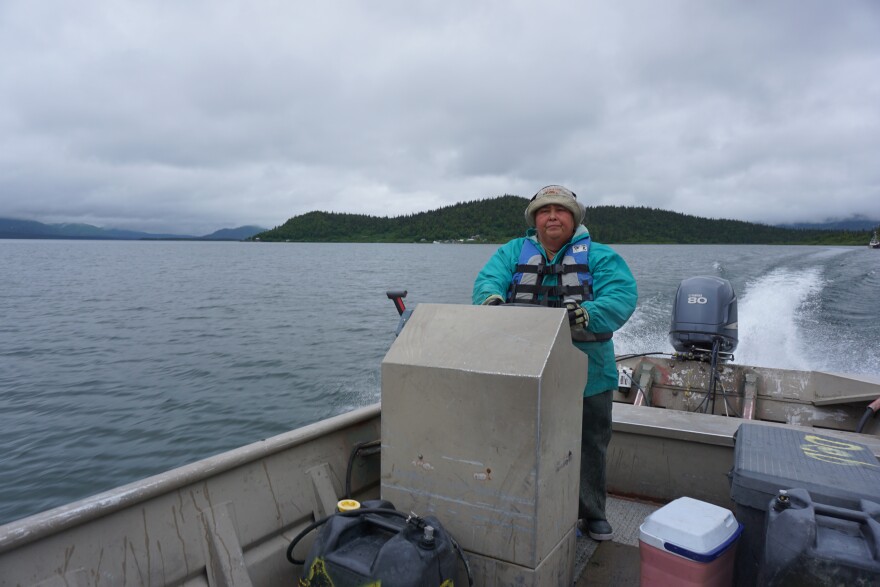Each summer, Alaskans take to the rivers, bays and oceans to subsistence fish. Some head out to set nets, others may use dip nets, but the end goal is the same: to stock up on enough fresh fish to last the winter. KDLG’s Stephanie Maltarich spent a day with one woman who has fished on a river near her home in Aleknagik since she was a child.
Debbie Coolidge spends at least one week each summer catching and processing salmon that will last her the entire year, continuing the traditions she learned from her grandmother.
Coolidge grew up fishing with women in her family on the Wood River near her home on Lake Aleknagik, in Bristol Bay.
“I started fishing when I was 8 years old, it was just my grandma and my Aunt Virgin," said Coolidge.
Today, in her mid-fifties, she’s still at it, and she’s still independent. In early July, she heads down river in her skiff to set nets.
Her favorite fish are kings.
“One year we went and sat down there and we didn’t expect to get a whole bunch of kings, our net was just smoking and we were trying to get the net in and trying to get the fish in, you know they are big fish," Cooldige said.
By early July, she usually has about 10-12 kings in her freezer, but this she only caught four.
Coolidge’s experience isn’t unique: The Nushagak River’s Chinook run started slow this summer. Additionally, the huge number of sockeye returning to the bay have filled subsistence nets, taking up room that kings may have occupied during a slower sockeye run.
Like many who fished this season, Coolidge caught hundreds of reds.

After a long day on the river, Coolidge sets up shop under a pop up tent in her front yard. She processes fish while they are fresh.
First, she washes them.
Then, she lines them up on a chest-high table.
Next, she cuts them with an ulu.
“It's considered a women's knife, we use it for everything, cutting fish, cutting meat, cutting seal and beluga,” she said.
Often, she hangs them to dry. But the rainy summer made drying difficult this summer.
“There has been so much rain, trying to get them to dry, they are looking sad though,” said Coolidge.
And sometimes, they end up in the smokehouse she built with her brother many years ago.
Once the processing is done?
Coolidge smiled, laughed and said, “We eat it!"
Early this summer, Coolidge and her son enjoyed watching a show that explored Japanese food and culture. The series inspired them to share food stories as they relate to Yupik culture and way of life.
So one day, her son took out the camera and started filming.
“We thought about doing that with king salmon and how we do strips, how we catch, process and then eating them" Coolidge said. "We thought about doing that with greens we pick; incorporating that into the video. Berries, eating and enjoying it just showing the world what our life is like.”
For Coolidge, the project is not just about the food she eats; it’s also about culture, community and taking care of one another.
She’s not sure what they’ll do with the videos, but she hopes they can help preserve and teach others about Yupik cultural traditions.
“There are disabled people and people don't have resources to come and get fish, so everyone shares," she said. "Even in the wintertime when people get moose or caribou, people share with the elders and widows and people who can’t do it themselves. ”
A day of fishing and processing isn’t complete until Coolidge throws some fresh filets on the grill with her favorite marinade.
“I get a nice char on it, then I flip it over and let it cook for awhile, then I put the glaze on it," Coolidge said.
With jars of canned salmon stacked in the corner, more in the freezer and plenty hanging outside, Coolidge is stocked for winter.
Contact the author at stephanie@kdlg.org or 907-842-2200.


